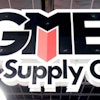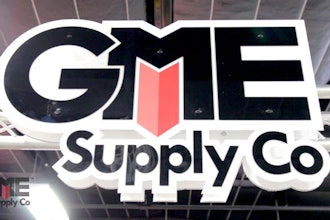S ales Process Engineer ing:
three t ypical scenar ios
These three scenarios show how Sales Process
Engineering (SPE) can be applied to organizations
of different sizes to — in each case — increase
business-development activity and decrease
operating expenses.
P: + 617 30 100 800 E: [email protected]
www.ballistix.com.au
Ballistix: Sales Process Engineering
Sales Process Engineering:
three typical scenarios
Preamble
Objective
The objective of this document is to show how Sales Process Engineering (SPE) can be applied
to organizations of different sizes to — in each case — increase business-development activity
and decrease operating expenses.
Overview of Sales Process Engineering
In essence, SPE involves the application of division-of-labor to sales.
Salespeople focus exclusively on selling (four appointments a day, five days a week) and all other
tasks are performed by other specialists:
1. Sales coordinators assume ownership of sales opportunities and plan activities
(appointments) into salespeople’s calendars. (A sales coordinator works with a
salesperson as does a personal assistant with a senior executive.)
2. Technical experts (project leaders) assume responsibility for solution design and the
generation of proposals. Project leaders also manage the relationship between
customers and operations during delivery.
3. Customer service representatives assume responsibility for the ongoing
management of accounts — including the procurement of repeat purchases
4. A promotional coordinator interfaces with marketing to ensure that sufficient
opportunities are generated to enable the sales coordinator to maintain the salesperson
at 100% utilization
The challenge with division-of-labor is the synchronization of these various resources. In SPE,
this is achieved by centralizing workflow management. (Just as scheduling is centralized in a
project-management environment.)
Assumptions
In each of the three scenarios, we assume the following:
1. The firm sells major products or services (i.e. not commodities)
2. A tight integration between sales and operations is important
3. The firm sells direct (the application of SPE to a reseller channel is beyond the scope of
this document)
Ballistix: Sales Process Engineering
Page 2
Our position on lay-offs
Our position is that downsizing is not a business-improvement strategy. In other words, it does
not make sense for headcount (or payroll cost) to determine the nature of the business model
(the model should drive headcount).
Each of the following scenarios shows a decrease in operating expense (payroll cost), resulting
from a reduction in the size of the field-based salesforce (although, in two of the scenarios,
headcount actually increases).
How do we rationalize this?
First, it should be obvious that SPE is not a downsizing strategy. The objective of SPE is to
increase the performance of the sales function (in terms of sales volume and customer service
quality) not to reduce its cost.
However, it should also be obvious that, in all but the fastest-growing enterprises, it is
impractical to increase the activity of each salesperson by an order-of-magnitude and maintain
the same sized sales team. There are three reasons for this:
1. The organization’s Operations (engineering, fulfillment, etc) is not able to keep up with
sales
2. The organization is not able to fund the massive increase in promotional expenditure
required to generate 10-times the current volume of sales opportunities
3. The organization’s market is simply not large enough to justify a ten-times increase in
business-development appointments
With this in mind, we approach the resourcing issue as follows:
1. In most organizations we convert most of the existing salespeople into project leaders.
Typically, the new project leader role is the role most similar to salespeople’s existing job
profile. Furthermore, converting salespeople to project leaders tends to improve
customer service and minimize the risk of losing valuable team members.
2. In a mid-sized organization, we expect one or two salespeople to depart of their own
volition. This is not a bad thing (for either party) if the salespeople who leave are those
who are currently adding little value.
3. If the organization genuinely has more salespeople that it needs, and if some of these
salespeople cannot be productively redeployed elsewhere, then it is irresponsible to
retain them. To do so disadvantages both the organization and (in the long run) the
team members.
Ballistix: Sales Process Engineering
Page 3
Appointments up: what about revenues?
The following scenarios consider the impact of SPE on the volume of business-development
appointment (and operating expenses). Does it follow that an increase in business-development
appointments will result in an increase in revenues?
In our experience, appointment volume is the primary driver of sales revenues.
In major-sales environments, the importance of salespeople’s negotiation skills tends to be
overestimated and the intelligence of customers, underestimated!
For the most part, a capable salesperson cannot convince a customer to make a purchase that is
not in his or her commercial interest.
Accordingly, if you want to make more sales, you should almost certainly engage with more
potential customers.
That said, it is incorrect to assume that additional appointments are distributed only across new
sales opportunities. Most salespeople perform startling few appointments per opportunity —
and take a surprising amount of time to process each opportunity.
In the environment we propose, as well as engaging with more potential customers, salespeople
will visit existing opportunities more frequently. This will, in our experience, impact positively
on both opportunity lead-time and the percentage of opportunities won.
While it is our expectation that an increase in business-development appointments will cause an
increase in revenue, we do not expect to see a linear correlation between the two. In other
words, if you double appointments you shouldn’t expect sales to double. Increase, yes; but not
double!
Of course, any increase in revenues (assuming margins stay constant) without a corresponding
increase in operating expense will impact positively on profitably.
Ballistix: Sales Process Engineering
Page 4
Scenario 1: Mid-sized firm (or division of large firm)
The numbers
Rationale
Currently, 10 salespeople perform just 20 business-development appointments a week (2 each).
The balance of their time is dedicated to customer service and project leadership.
Customer service quality is likely to be sub-optimal for three reasons:
1. The inefficiencies inherent in multitasking are causing salespeople to be overworked —
meaning that they lack the focus required to effectively perform fulfillment-related
activities
2. Salespeople are ill-equipped to perform customer-service tasks (they are hard for clients
to contact and remote from Operations)
3. Because there is no clear delineation between the (customer-service) responsibilities of
salespeople and members of the customer-service team, the latter have no choice but to
take a back seat.
In the new model, the salespeople with the greatest technical expertise are converted into
project leaders (a total of 4). Four salespeople leave. The two remaining salespeople are those
with a breadth (as opposed to depth) of product knowledge and superior negotiation skills
(almost certainly, these salespeople are also prepared to travel extensively).
Each of the remaining salespeople is provided with a sales coordinator.
Three new team members are added to the customer-service team (and customer-service
representatives now engage proactively with customers.)
Finally, a promotional coordinator is added to interface with marketing (to ensure that
marketing maintains a sufficient queue of sales opportunities).
The result is that the volume of business-development appointments increases by 100%, in spite
of an 18% reduction in payroll expenses!
Headcount Total Payroll
Current Future Current Future
Salespeople 120,000$ 10 2 1,200,000$ 240,000$
Sales coordinators 45,000$ 0 2 -$ 90,000$
Promotional coordinator 45,000$ 0 1 -$ 45,000$
Customer service team 40,000$ 2 5 80,000$ 200,000$
Project leaders 120,000$ 0 4 -$ 480,000$
Total headcount / payroll 12 14 1,280,000$ 1,055,000$
Results Current Future Change
Sales appts / salesperson / week 2 20 900%↗
Total sales appointments / week 20 40 100%↗
Operating expense (payroll) 1,280,000$ 1,055,000$ 18%↘
Incremental cost / appointment 1,333$ 549$ 59%↘
Personnel Salary
Ballistix: Sales Process Engineering
Page 5
Scenario 2: Small firm
The numbers
Rationale
In this scenario, one out of three salespeople is retained, and one is converted into a project
leader.
A sales coordinator and a customer-service representative are added.
A promotional coordinator is not required because the existing opportunity flow should be
sufficient to maintain one salesperson at full utilization. This assumes that:
1. The organization has an appealing product or service (if it doesn’t, this is a new-product
development issue, not a sales issue)
2. The elimination of qualification will significantly increase opportunity flow (while
qualification tends to increase salespeople’s conversion rates, it is undesirable because it
impacts negatively on the volume of sales, the size of transactions and average margin)
The result is that the volume of business-development appointments increases by more than
200%, in spite of a 9% reduction in payroll expenses!
Headcount Total Payroll
Current Future Current Future
Salespeople 120,000$ 3 1 360,000$ 120,000$
Sales coordinators 45,000$ 0 1 -$ 45,000$
Promotional coordinator 45,000$ 0 0 -$ -$
Customer service team 40,000$ 1 2 40,000$ 80,000$
Project leaders 120,000$ 0 1 -$ 120,000$
Total headcount / payroll 4 5 400,000$ 365,000$
Results Current Future Change
Sales appts / salesperson / week 2 20 900%↗
Total sales appointments / week 6 20 233%↗
Operating expense (payroll) 400,000$ 365,000$ 9%↘
Incremental cost / appointment 1,389$ 380$ 73%↘
Personnel Salary
Ballistix: Sales Process Engineering
Page 6
Scenario 3: Start-up or micro-business
The numbers
Rationale
This scenario assumes a business with 10 or less employees (including the owner).
Our position is that:
1. A business this small is unlikely to be able to fund the sales-support infrastructure
required to maintain a dedicated salesperson
2. Adding a salesperson without this infrastructure is an unacceptable business risk for a
business this small (the rainmaker tends to end up calling the shots)
3. The day-to-day management of a business this small does not require a senior person
Accordingly, our approach in such a situation is to divide the owner’s time between business-
development appointments and project-leadership activities.
We will add a sales coordinator (effectively an executive assistant) who will insulate the owner
from day-to-day distractions and ensure a consistent and optimal mix of the two activity types in
the owner’s calendar (business development and project leadership).
We will also add a customer-service representative
The result is that the volume of business-development appointments increases by 500%, in spite
of a 29% reduction in payroll expenses!
Headcount Total Payroll
Current Future Current Future
Salespeople 120,000$ 1 0 120,000$ -$
Sales coordinators 45,000$ 0 1 -$ 45,000$
Promotional coordinator 45,000$ 0 0 -$ -$
Customer service team 40,000$ 0 1 -$ 40,000$
Project leaders 120,000$ 0 0 -$ -$
Total headcount / payroll 1 2 120,000$ 85,000$
Results Current Future Change
Sales appts / salesperson / week 2 12 500%↗
Total sales appointments / week 2 12 500%↗
Operating expense (payroll) 120,000$ 85,000$ 29%↘
Incremental cost / appointment 1,250$ 148$ 88%↘
Personnel Salary
The Death of Field Sales Process Engineering: three typical scenarios
These three scenarios show how Sales Process Engineering (SPE) can be applied to organizations of different sizes to — in each case — increase business-development activity and decrease operating expenses.
Latest in Home
Ferguson Reports Strong Results to Finish '25
September 16, 2025
Wesco Invests $10M in Procurement Software Startup
September 15, 2025
GME Supply Acquires Houston Workwear, PPE Supplier
September 12, 2025






















